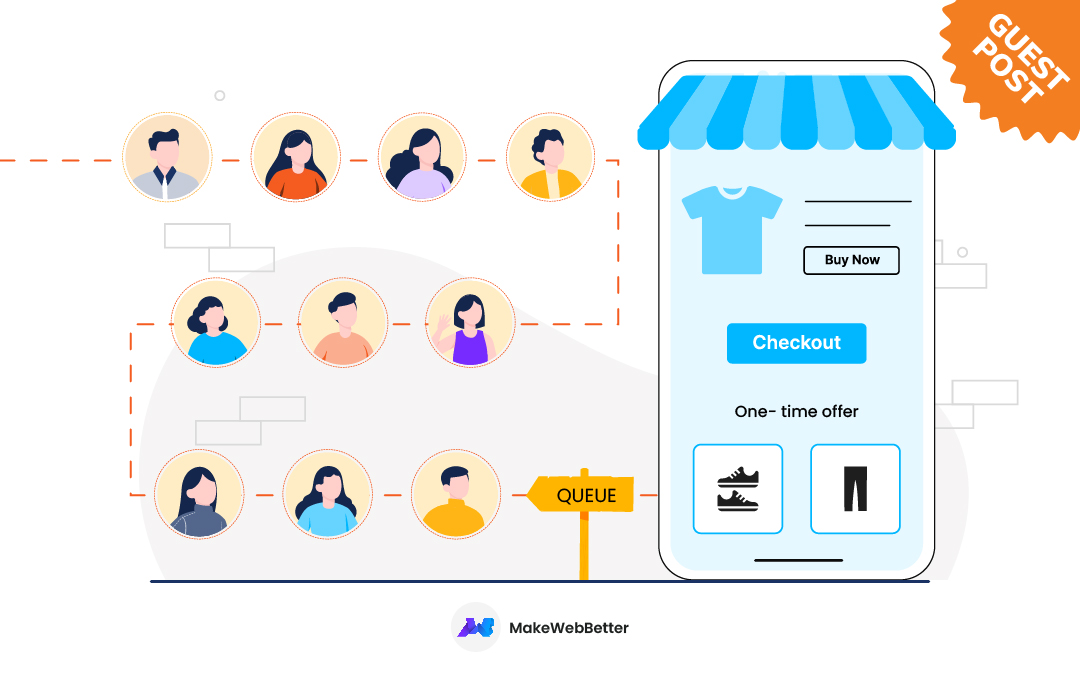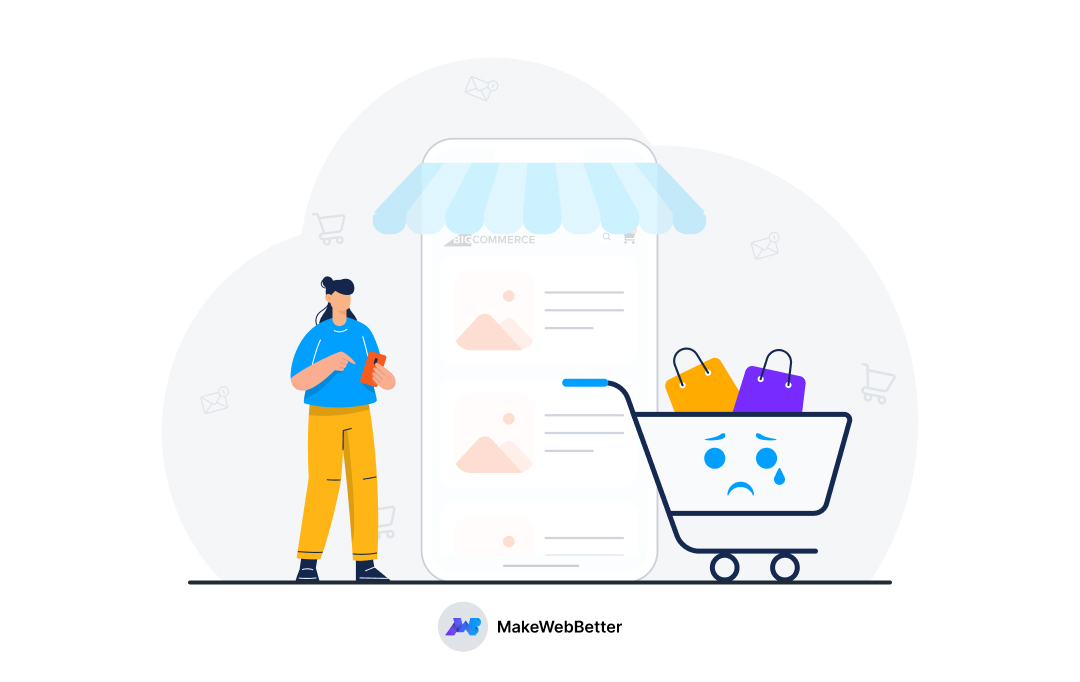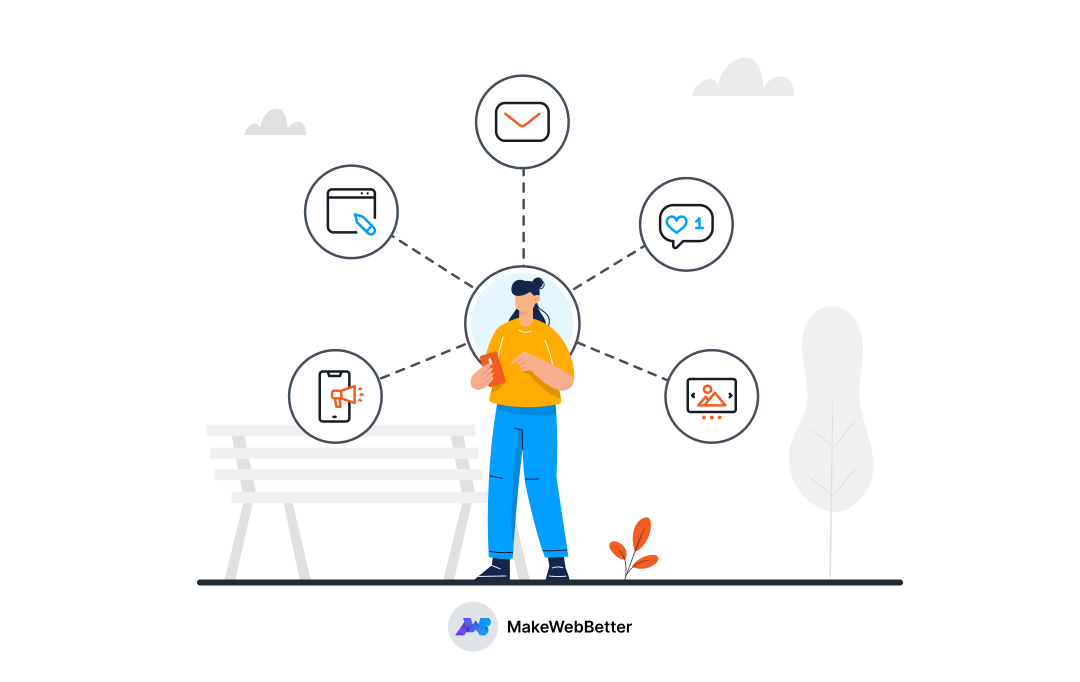Your customers are more impatient than ever before. In this era of instant gratification, they don’t expect to wait for anything. If it so happens that your customers do have to wait, it’s your job as an eCommerce retailer to make their wait as pleasant as possible. This is where virtual queuing comes in.
This guide will explore precisely what virtual queuing is and why you might need it. Rounding off on how virtual queuing can benefit your eCommerce business, some virtual queuing tips, and how to implement this strategy to boost your online sales.
What is Virtual Queuing?
The concept of virtual queuing is a game changer for modern impatient eCommerce customers.
Virtual queues are essentially online waiting lines. A good example of virtual queuing is the scenario of a customer seeking online sales support about purchasing a tent. Mr. Camping Wannabe is eager to learn whether the tent he wants to buy is suitable for his family of seven plus a beloved gerbil.
He is not so keen to wait online for a response and wants to get on with his day. He joins a virtual sales support queue, is informed of his place in line and estimated wait, and cracks on with researching the best waterproof gear for his impending camping trip.
Virtual queuing isn’t only reserved for eCommerce. The concept of virtual queuing began in inbound call centers – with agents using tools like automatic call distribution to route and manage calls. An omnichannel call center solution embraces the notion of virtual queuing and strives to serve customers on any channel – at a time convenient to them.
How Does Virtual Queuing Work?
The virtual queuing process is relatively simple for customers:
- Customers check into the virtual queue by scanning an in-store QR code, touchscreen kiosk, or by sending a text message.
- Customers can see their place in the virtual queue using their smartphones and monitor their progress in the digital line.
- Notifications are delivered via text messages or emails indicating estimated wait times, current place in line, unexpected delays, and any other relevant information.
- Throughout the virtual queue process, customers can interact with staff members to share information about their inquiries or special assistance needs.
- Customers receive notifications when they reach the front of the virtual queue.
Other channels used for virtual queuing sign-up include:
- Online customer portals
- Online appointment booking
- Smartphone apps
Basic virtual queue management systems comprise features such as:
- Online channels
- QR codes
- Virtual sign-up features
- Multi-channel virtual queuing information updates
- Server application or queue management server
- Third-party system integration
- Customer feedback system
Some businesses opt for a customized virtual queuing solution to seamlessly integrate with their existing infrastructure and link to other systems. For example, businesses can use VoIP telephone systems as an all-in-one communications platform to manage virtual queuing communications across multiple channels.
Why Do You Need Virtual Queuing?
If you’re interested in improving your customer’s experience with your brand (and you should be), depending on your business’s industry, virtual queuing is a strong strategy. Customers that have a good brand experience will become loyal advocates and refer you to people they know.
Satisfied customers will likely respond positively to CSAT (customer satisfaction) surveys, which boosts your overall credibility and is just wonderful for social media and marketing in general. Harnessed correctly, the power of solid referrals might mean that you won’t need advice on the best affiliate marketing programs.
Take a look at this Parkinson’s Law quote:
Liberation of resources results in reinvesting these same resources back into the original context.
What does this mean? Well, by implementing virtual queuing, you are essentially giving your customers back their time. This strategy often results in feelings of loyalty towards your brand. For eCommerce stores, this can translate to more time shopping on your website: if you position products tactically, your customers have time to indulge in your special cross-selling offers and perhaps even sign up for your eCommerce points and rewards programs. Impulse shopping mode: activated.

Source: Wikipedia
Benefits of Virtual Queuing
Need more advantages of virtual queuing? Read on.
1. Customer Feedback
Some virtual queuing management systems integrate with business intelligence tools to collect customer feedback. These insights provide valuable information that you can use to grow your business and enhance the customer experience. When customers sign up to your virtual queue using a mobile app or SMS, customer feedback can be gathered from the same channel to increase the response rate.
2. Boost Employee Efficiency
Virtual queuing reduces staff workloads and allows your team to organize their tasks better. You no longer have to worry about employee task unproductivity because your team has the relevant information from the queue’s digital interactions to fulfill their customers’ needs.
3. Manage Peak Times
Better handle website traffic surges during holiday seasons and events like Black Friday and Cyber Monday. Use virtual queuing with pre-set limits to filter website traffic and avoid network overload.
4. Online Fairness
If you’re in the eCommerce space, you’ll be familiar with limited edition product lines or flash sales. Because virtual queuing works on a first-come, first-served basis, this concept promotes online fairness.
5. Calmer Work Environments
Contact center staff use tools like power dialer software to reduce the time to make high volumes of outbound calls and alleviate digital workplace tension. In the same way, virtual queues make for calmer work environments as the staff isn’t under pressure to manage physical queues.
6. Reduces Perceived Wait Time
Smart virtual queuing systems that calculate waiting times are invaluable for keeping your customers informed and happy.
How to Implement Virtual Queuing?
- Setting up virtual queuing on your eCommerce website involves managing a browser-based portal – either through a DNS change or the use of JavaScript. Whichever route you take, you’ll probably need an experienced web developer to implement it.
- Decide how much traffic you want to allow into each part of your website. To determine this threshold, consider how much traffic your servers can comfortably deal with – without any nasty side effects like lost functionality, performance issues, or website crashes.
- Beyond this threshold, additional website visitors join the virtual queue on a first-in, first-out basis.
- Depending on your chosen system, you can receive insights to adjust site capacity and optimize the virtual queue accordingly.
Top tip: Ask your provider or developer to explain their enterprise-grade security meaning and protocols. This is because you’ll need to be compliant with GDPR and other regulatory bodies. To this end, your system requests must be encrypted as HTTPS traffic.
eCommerce Virtual Queue Tips
1. Visual Appeal
Your virtual queue must have a visual impact to preoccupy your customers. Think about elements like live updates and product showcases for customers to watch while they wait. Your virtual queue is an extension of your business’s brand, so ensure that the platform is branded and consistent with your business’s themes and colors. Keeping your customers happy and engaged in their virtual queues reduces queue drop-out rates and increases conversion rates.
2. Consider Emotions
Good virtual queue management ties in with emotional connotations. If your customers feel frustrated, bored, or angry in your virtual queue, they’ll ditch the queue and seek another service provider or store. Avoid this from happening by considering your customers’ feelings at every stage in the virtual queue. You can do this by distracting them enough to forget they’re waiting or making the queuing experience pleasurable.
Shoot for positive emotions like feeling calm, entertained, valued, and safe. Don’t bore them to tears with information like what is TensorFlow used for. Instead, implement interactive elements and discount codes to pique their interest.
Offering transparent waiting times to virtual queue attendees promotes a feeling of security. Add to this by informing them what will happen next in their journey so that they feel prepared.
3. Integrations
To optimize virtual queueing, your chosen platform should integrate with other apps and tools like CRM systems, store analytics platforms, and eCommerce personalization dashboards. Some businesses implement interactive voice response features to provide customized options for waiting users. These integrations help your business to make personalized suggestions for your customers and obtain meaningful consumer data.
Explore HubSpot Integrations for Your eCommerce Platform
4. Implement FAQs
To deliver excellent customer service, consider implementing FAQs throughout the virtual queue experience. A means for answering commonly asked questions reassures customers that they’re in the right place and your business can solve their problems.
Setup Your Knowledge Base To Offer Fulfilling Customer Experience!
Virtual Queuing Boosts Your eCommerce Business
Time is a valuable commodity. So if your business has the power to give that to your audience, you’re in a great position to grow your eCommerce business with a loyal band of happy customers.
One of the reasons that virtual queuing is so effective is because they give customers a sense of control over their situations. These positive experiences with your brand are powerful reminders that your customers like to deal with you.
Improving customer retention and reducing customer churn are just two solid reasons to implement virtual queuing for your eCommerce website. But there are many more – and they all revolve around becoming more customer-centric to boost your sales and scale to new heights.
Isn’t it time you checked into the virtual queue concept? Drop your thoughts in the comments below.








